Review: Xiaomi Mi Sphere 360 Camera
Jan 16, 2018, 11:20 AM by Eric M. Zeman
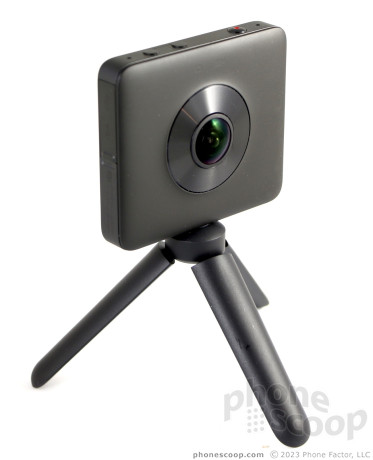
Cameras that capture 360-degree photos and videos are fun and creative smartphone companions. Xiaomi's Mi Sphere 360 Camera is an affordable entry in the space that lets you capture your 360-degree experiences, edit them, and easily share them with others. It offers high-resolution, 360-degree images and video, as well as a bevy shooting modes that pave the way to near limitless results. Here is Phone Scoop's in-depth review.
World-encompassing, 360-degree photography is one of the most interesting ways to record your environment. Whether you're standing at the top of a mountain, enjoying a concert, or powering through extreme sports, 360-degree cameras let your friends and family more fully share in the moment.
Smartphones themselves are not yet able to capture true 360-degree imagery in an instant. The lenses needed simply aren't practical to cram onto the slim form factors we've all come to enjoy slipping into our pockets. That's why companies like Motorola and Essential Products created cameras that attach to their phones, while others such as Samsung and Xiaomi offer stand-alone 360 cams to be paired wirelessly with your phone.
The Xiaomi Mi Sphere 360 Camera is the latest entry in the space and makes some big claims about its photography powers. We put it to the test.
Hardware
Many stand-alone 360-degree cams look the same way: like a bulbous, eye-shaped thing on a stick. The Mi Sphere is entirely different; it resembles a small, pocketable point-and-shoot camera.
The Mi Sphere is a 3-inch by 2.7-inch rectangle made of metal. It has a matte black paint job and rounded lenses on each of the flat sides. The camera is rather hefty at 6.7 ounces, but it feels incredibly tough and strong thanks to the aluminum chassis. At only half an inch think, you can actually carry this camera around in your pocket comfortably — something that cannot be said for most eye-shaped 360 cams. I like the compact shape and dimensions of the Mi Sphere quite a bit.
Profile
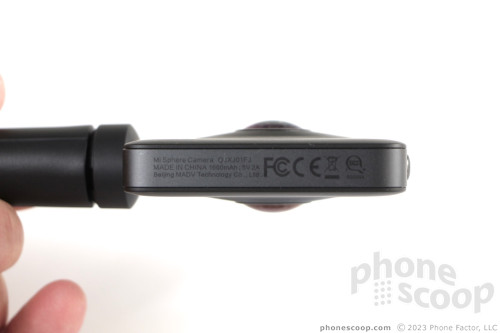
The camera is rated IP67 for protection against dust and water. It can handle an accidental dunk (up to 1 meter for up to 30 minutes) when filming near water. The lenses, however, have no protection. Putting the camera down on either side puts the lenses at risk of scratches. Thankfully the camera ships with a carrying pouch; I suggest you keep the Mi Sphere in the pouch whenever possible.
The controls are all on the top edge. The shutter button is the largest of the three keys. It's raised and is marked with an obvious red dot. Two smaller, flat buttons are to the left: the first is the power button and the second is the WiFi button. All three buttons have excellent travel and feedback. Two small holes on the top edge give away the location of the stereo microphones. There are some hidden LEDs that light up when using the camera.
Buttons
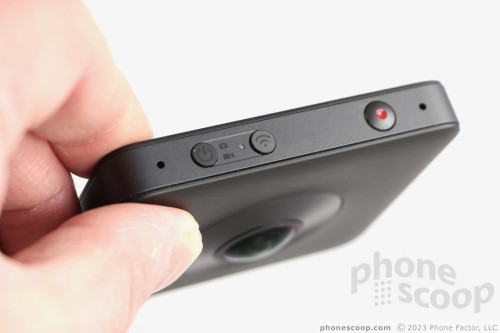
A large hatch covers about two-thirds of the camera's left edge. You'll need to peel it back to access the microUSB port for charging, and the microSD memory card. (A memory card is absolutely required, the Mi Sphere has no internal storage of its own. Boo.) Be sure to firmly affix the hatch in place to ensure the camera is watertight.
Hatch
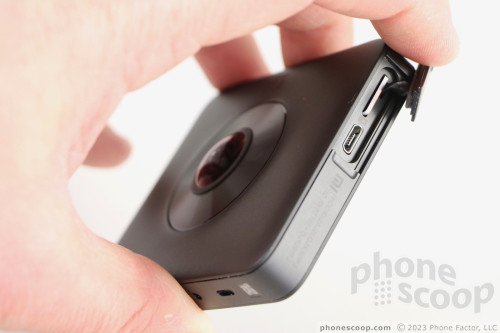
A standard one-quarter-inch screw is tucked into the bottom edge of the Mi Sphere so you can attach it to tripods or other mounts. I like that the screw housing is made of metal, rather than plastic. The camera ships with a really small tripod for setting it on tables and other flat surfaces.
The hardware could not be more straightforward in design and use.
Mounting Screw
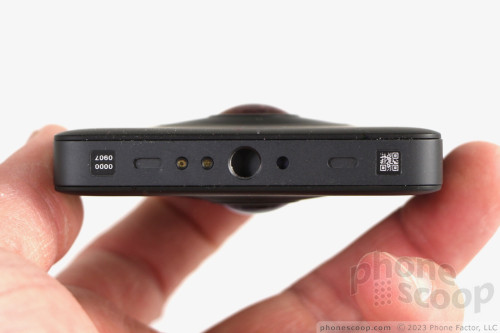
Software
The Mi Sphere can't do much without the associated mobile app. On its own, you can turn the camera on, toggle between picture/video modes, and snap simple shots. That's literally it.
The app lets you control nearly every facet of the camera's behavior. The Mi Sphere app is available for free from the Google Play Store and iTunes App Store. I tested the Mi Sphere on Android with the Huawei Mate 10 Pro.
The Mi Sphere app has three main functions.
First, it hooks you into a miniature social network of sorts that centers on other users of the Mi Sphere 360. You'll see sections for the latest and featured images, all taken by other people with the Mi Sphere. I kind of like this idea, as it lets you see the creative things that others are able to do with the camera. You'll have to create a Xiaomi account if you want to include or share your own photos. Of course, you can completely ignore this part of the app if you want (but you can't hide it).
Second, the app powers real-time photography with the Mi Sphere and gives you full control over the hardware's settings. Through the app you can shoot pictures or video, and tap into the various shooting modes. On the still image side of things, you can set a timer (3-10 second delay), set intervals (2 second to 5 minutes), or turn on bracketing (+/- 0.5 - 3 stops).
On the video side, you can shoot standard video, set the camera to record a single short clip (10-30 seconds), or capture time-lapse or slow motion video. I found these all easy enough to manage. I like that the app lets you control capture/playback speed for time-lapse and slow-mo.
Third, the app helps you manage your image and video library. You're able to see everything stored on the camera and transfer files from the camera to the phone quite easily. The direct WiFi connection means even lengthy videos beam over in a flash. You can view 360-degree images from several different viewpoints (spherical, tiny planet, panorama, flat). The app also supports a VR viewing mode. When you switch to this mode, you'll need to supply VR goggles, such as Google Cardboard or Daydream, to see the images. It's clunky. The app includes a basic editing tool that lets you apply filters to the images. Sharing to social networks takes only a few taps of the fingertip.
Gallery

As far as settings go, you can manage nearly everything. Exposure, ISO, resolution, GPS tagging, white balance, storage, camera sounds, power preferences, preview mode, and more can each be adjusted for the still camera and the video camera separately, which I appreciate.
It took me a few moments to find my way around the app, but once I did I was able to master all the functions of the Mi Sphere with ease.
Performance
Pairing with the Mi Sphere with your phone is a pain. There's no Bluetooth, only WiFi, and the app requires you to manually connect each and every time you boot the camera and app. I wish the two would connect automatically, as this would save a lot of time and hassle. That said, the direct WiFi connection is way faster than Bluetooth at transferring files. The WiFi range is really good, too: easily 100 feet or more. That means you can set the Mi Sphere down and step away before shooting.
Battery life could be better. The 1,600mAh battery has enough juice to capture about 75 minutes of 3.5K video (3,456 x 1,728) at 30fps or shoot about 200 images. You can squeeze a bit more video capture time (up to 90 minutes) if you downgrade the resolution. The battery ingests a 50% charge in 30 minutes, and a full charge in about 80 minutes.
The camera gets really warm during use. Xiaomi says this is normal, as the metal chassis was designed to dissipate the interior heat. Still, it gets hot.
Each lens captures a 190-degree field of view. The lenses bend light into an identical pair of Sony 23-megapixel sensors. By way of comparison, the Motorola Moto 360 Mod uses two 180-degree lenses. The difference is in the stitching. The Mi Sphere has a bit more overlapping data to work with and does a masterful job of stitching images and video together. The result is near-seamless 360-degree content. Many competing devices exhibit a clear and distinct line where the two images are pasted together. Not the Mi Sphere. It offers the best stitching I've seen from any 360 cam. 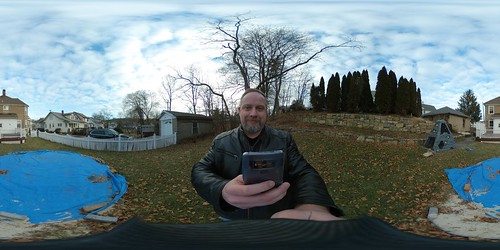
As for image and video quality, prepare to be impressed. The competing Samsung and Motorola 360 cameras are fun to use, but produce horribly grainy and soft images. By way of comparison, the Mi Sphere offers far sharper imagery with less grain and better exposure. It includes six-axis electronic image stabilization to help keep things sharp. The excellent focus really caught my attention; for example, I noticed many indoor shots offered sharp focus at the edges of the camera's vision (top, bottom), where competing models typically lose sharpness. Not every image is perfect and you'll still see some oddness here and there, but I chalk these up to the limits of 360-degree cams. 
Video is also excellent. In addition to sharp focus and accurate exposure/white balance, the footage I captured was incredibly smooth. We can thank the EIS for that. (More, high-quality 360-degree photo samples are available here.)
Of all the 360-degree cameras I've tested, the Mi Sphere delivers the best overall images and video.
Discussion
Quality costs money. At $299, the Xiaomi Mi Sphere 360 Cam is one of the more expensive smartphone-centric devices on the market. Samsung's Gear 360 and Moto's 360 Mod each cost about $200 when purchased on their own (though the Moto is often offered for free or at a discount with the purchase of a Moto Z smartphone). In this case, the extra cash for the Xiaomi gets you better results.
The Mi Sphere is easier to stow and use than competing models thanks to its more traditional camera design and shape. The metal materials and water resistance give it a huge advantage over the plastic-clad competition. The app is generally easy to use and provides an amazing amount of control over the Mi Sphere's behavior. The camera takes very good 360-degree photo and videos, some of the best I've seen at this price point.
On the downside, battery life could be better, the Mi Sphere could include at least some internal storage, and the pairing/connecting process could be improved.
Despite its quirks, the Xiaomi Mi Sphere is an excellent choice if you're seeking a smartphone-controlled 360-degree camera.
You can buy the Mi Sphere 360 from Amazon.com.
Comments
No messages


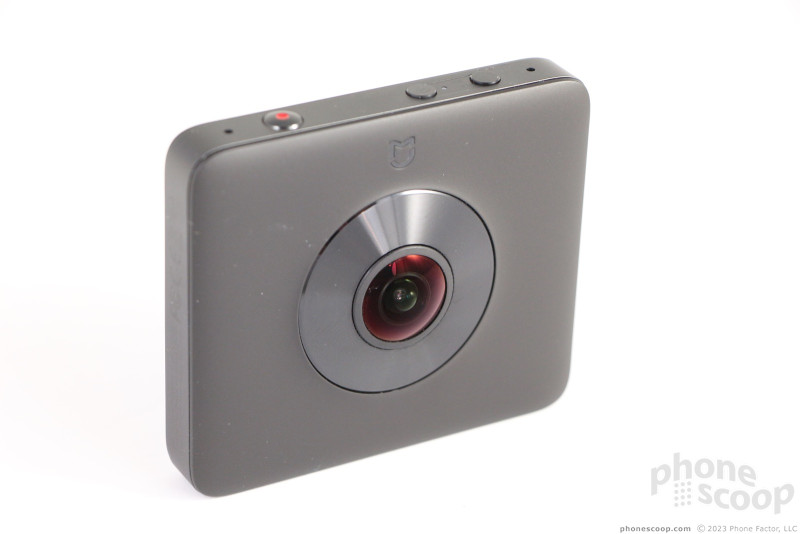
























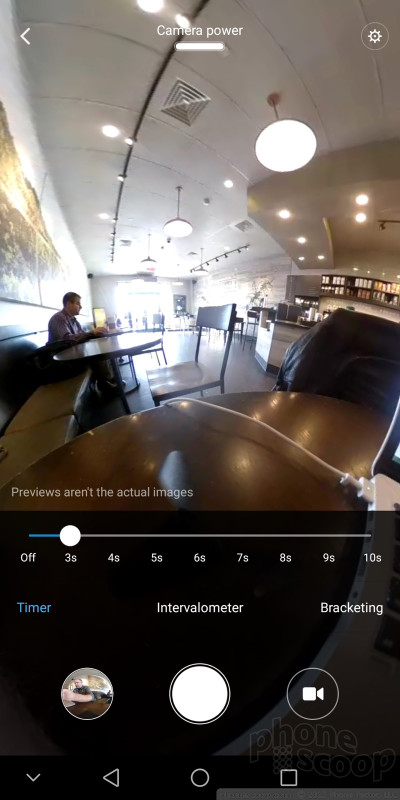




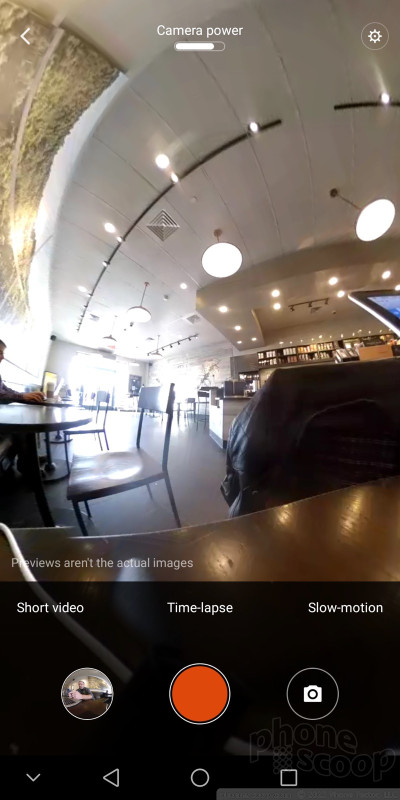










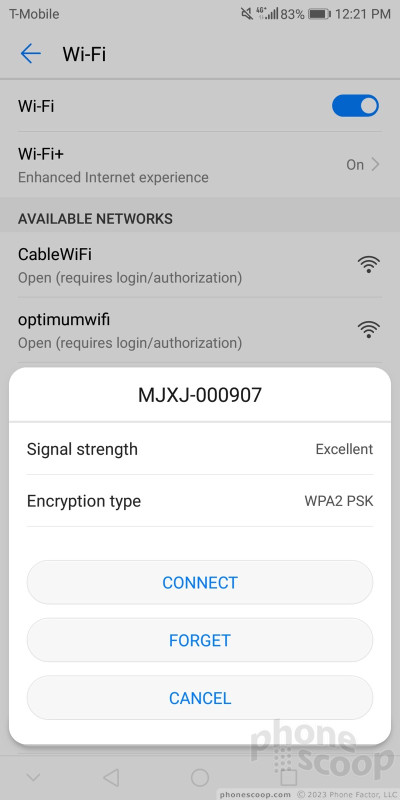


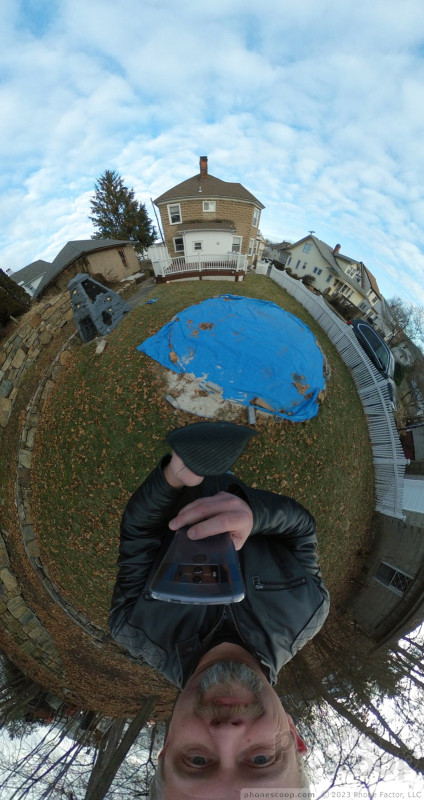







 Qualcomm Taps Iridium for Satellite Connectivity
Qualcomm Taps Iridium for Satellite Connectivity
 iPhone 15 Series Goes All-In on USB-C and Dynamic Island
iPhone 15 Series Goes All-In on USB-C and Dynamic Island
 Samsung S24 Series Adds More AI, Updates the Hardware
Samsung S24 Series Adds More AI, Updates the Hardware
 iPhone 16 Brings More Features to All Price Points, Including New Camera Control
iPhone 16 Brings More Features to All Price Points, Including New Camera Control
 Samsung Puts its Best Camera Yet in the Galaxy S23 Ultra
Samsung Puts its Best Camera Yet in the Galaxy S23 Ultra





